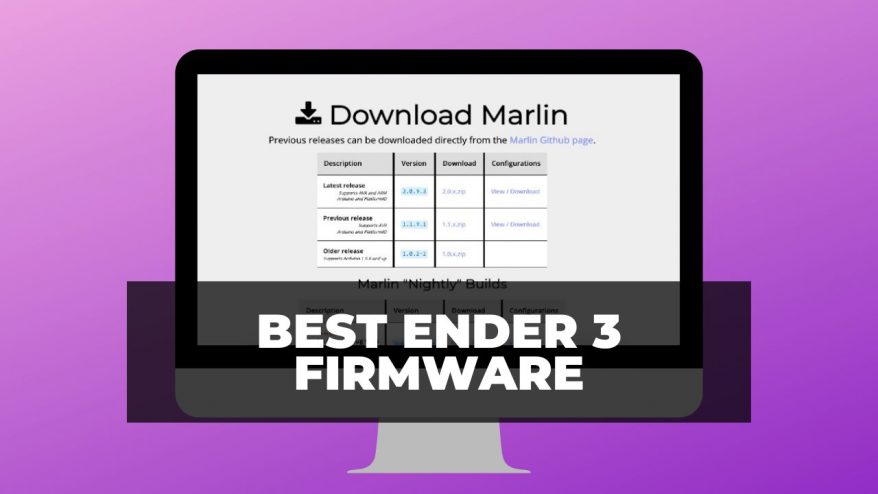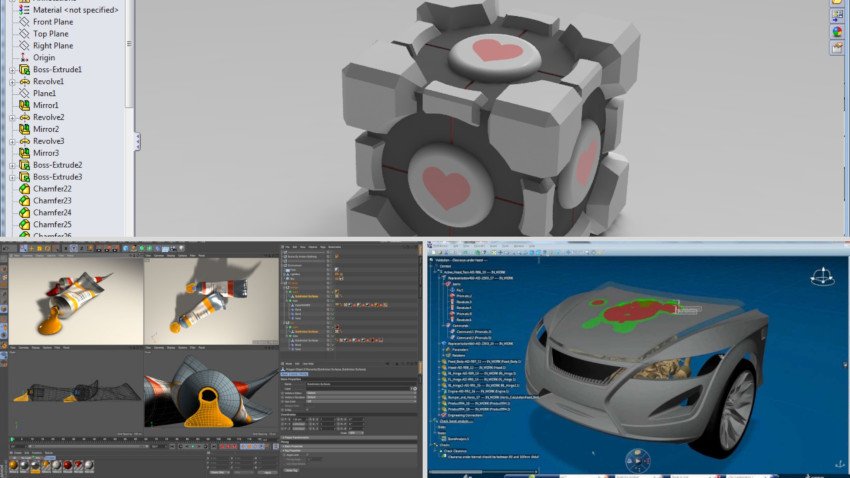
10 Best Professional 3D Design Software (Modelling Tools)


At 3DSourced we’ve covered everything 3D printing and 3D since 2017. Our team has interviewed the most innovative 3D printing experts, tested and reviewed more than 20 of the most popular 3D printers and 3D scanners to give our honest recommendations, and written more than 500 3D printing guides over the last 5 years.
We already shared the free 3D modeling software options out there – but if you’re a professional, it’s worth investing in more firepower and functionality.
To create truly stunning 3D printer models, you’ll need professional 3D modeling software and tools to match.
The right one for you will depend on your particular needs. For instance, Daz Studio focuses on character design, while Fusion 360 is great for teams working on projects collaboratively.
Price is also going to be a huge determining factor in your decision, with these tools ranging from free to over $10,000!
Because of this, I made my choices with value-for-money (rather than exact cost) in mind. I’ve ranked them considering the following criteria:
- Software feature depth: to be considered a top professional software you need a wide suite of tools to accomplish even the most technical needs.
- Versatility: not only how versatile the 3D modeling software tool is, but how easy it is to work with other programs or file types. For example, can the tool create STL files for 3D printing in a 3D slicer.
- Learning curve: even though you need a set of high-quality tools for professional 3D software, it doesn’t need to be unnecessarily difficult to learn.
So let’s step through the differences and work out which one is right for your needs.
Best Professional 3D Modeling Software Tools – Full Round-Up
The best professional 3D modeling software tools
1 – Daz Studio
- Company based: USA.
- Price: Free — with optional extras

Daz 3D focuses heavily on having the widest selection of character designs and professional 3D modeling options out there.
Daz Bridges were inspired by 3D artists who had a problem: they wanted to keep making artwork, renders, games and animations in the software they were already comfortable with, but they also wanted to use Daz 3D’s photorealistic and functional 3D content.
Now with Daz Bridges, you can design and edit your characters, and then export them to your preferred 3D modeling software, including to Blender, Maya, 3ds Max, Cinema 4D, Unreal, and Unity – with more coming soon.
Daz 3D Models are unlike anything you’ve used before — Daz Characters come rigged and textured, ready to morph, pose, animate and render.
New users get free model starter packs, Daz Bridges for six preferred 3D software, and access to morphable and functional 3D models. The Daz Shop is filled with Props, Poses, Vehicles, Environments, and anything else artists need to make the perfect 3D scene, animation, app, or game.
Daz 3D is also home to an active community of talented and enthusiastic 3D artists, hobbyists, and designers, and the Daz Gallery is always open to visitors and new submissions. No matter where or how you 3D, Daz is here to help inspire your creativity. And when you’re done designing, simply transfer your assets with Daz Bridges.
Daz Bridges: Seamlessly export your 3D assets
Whether you want to take advantage of Daz Studio’s morph dials, dForce physics simulation & photo-realistic character system, or keep working where you’re comfortable with amazing new 3D assets, Daz gives you the freedom to choose.
The heart of open source is the ‘open’ nature of the code. Every Daz Bridges user can view and use the source code to improve and expand on the software. Daz takes community collaboration seriously, having already released major updates to Daz Bridges with the help of community feedback.
Whether you want a feature that isn’t implemented or want to embed the code in your own project so you can bring Daz content to other places, these bridges are completely open and free to use, customize, and build with. The source code can be improved to work with custom figures, modified, or embedded in other software, so 3D artists can use it the way it works best for them.
2 – Fusion 360
- Company based: USA.
- Price: Free if educational license, Pro version $500/year.
- Accessibility: Download.
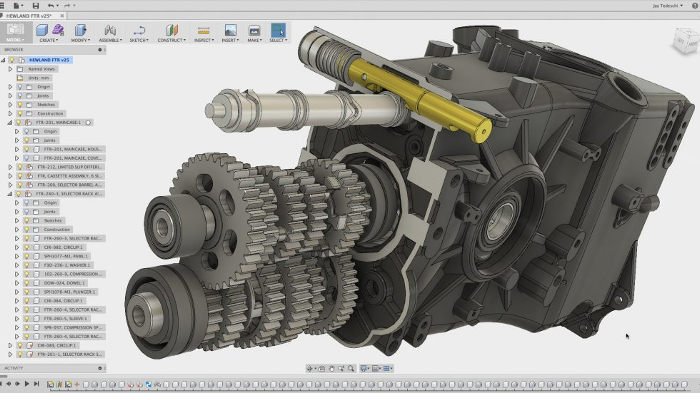
Another of Autodesk’s 3D software creations, Fusion 360 has schools, universities, and other institutions covered with its versatile range of 3D modeling applications. It’s still most definitely a professional program, though still built with simplicity in mind so a designer with only modest skills can navigate it easily.
Fusion 360 goes above and beyond in a variety of ways – for example in their feature which assesses your designed part and points out potential weak points in the structure. This is an invaluable asset in creating effective parts and saving time and material on different iterations.
Overall, Fusion 360 is a great, collaborative 3D software for professionals and intermediate designers alike. Not only can you easily download your designs as STL files, but also share them in the cloud and even edit your peers’ files too.
3 – Solidworks
- Company based: USA / France.
- Price: $4,000.
- Accessibility: Download.
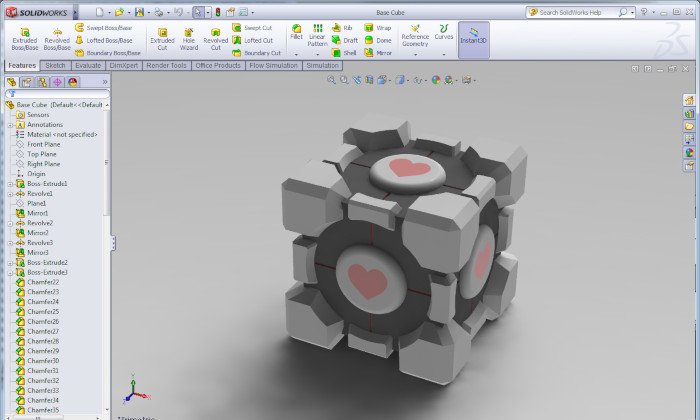
Originally created by Jon Hirschtick – then known as a member of the infamous MIT blackjack team – SolidWorks launched back in 1995 as an easy-to-use and affordable 3D software. Since then, SolidWorks has grown to become one of the, if not the, biggest commercial 3D software programs available – sold to Dassault Systemes for $310M in 1997.
Using the latest and most advanced systems, SolidWorks features some of the most innovative design tools available, including the ability to reverse engineer 3D-designed parts and also the ability to create very detailed curves in parts.
However, SolidWorks’ shaky support of STL files may cause problems for those who wish to 3D print their designs.
4 – AutoCAD
- Company based: USA.
- Price: $185/month, or free for students.
- Accessibility: Download.
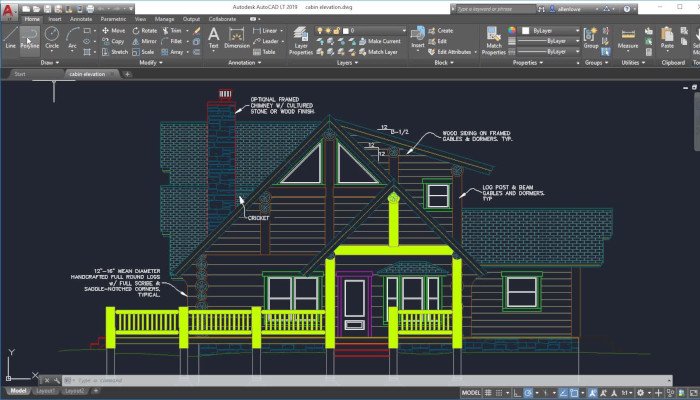
The original professional 3D CAD software, AutoCAD was released all the way back 1982 by software legends Autodesk – when computers themselves were still in their infancy. Though known for its awesome 3D modeling properties, AutoCAD doubles up well as an excellent 2D CAD tool.
If you’re an intermediate 3D designer, we would suggest a program with a less steep learning curve. This is simply because the macros and scripts involved take a long time to master, while programs like Fusion 360 are simpler. However, in terms of possibilities and how detailed and complex you can get, AutoCAD is right at the top. If you’re a mobile designer, you can also get the mobile app too.
5 – CATIA
- Company based: USA / France.
- Price: $10,000+.
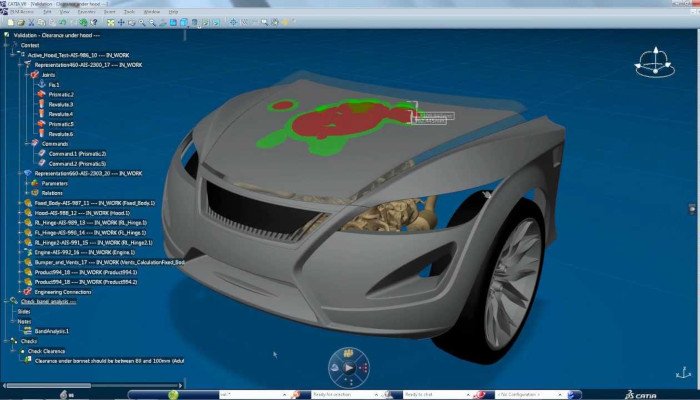
This article was made to list the best professional 3D software programs, and that’s what it does – and we couldn’t leave out this high-quality program just because it comes with a high price tag.
CATIA is also made by Dassault Systemes, who own SolidWorks. The difference is, however, that CATIA is the top-of-the-range product, for extremely powerful computers designed to create objects of the highest quality and most minute detail. SolidWorks, on the other hand, is still a worthy tool, but lacks the power that CATIA packs – for example when conducting a $5M R&D investment.
Another key difference is that CATIA is mainly used in surface modeling, rather than straight 3D design – for example in car design and aerospace industries. However, if you’re an intermediate designer who works independently, without a huge budget to use, it’s likely that CATIA isn’t the professional 3D software program for you.
6 – Rhino 6
- Company based: Spain.
- Price: $700-1,000, depending on if on Windows or Mac.
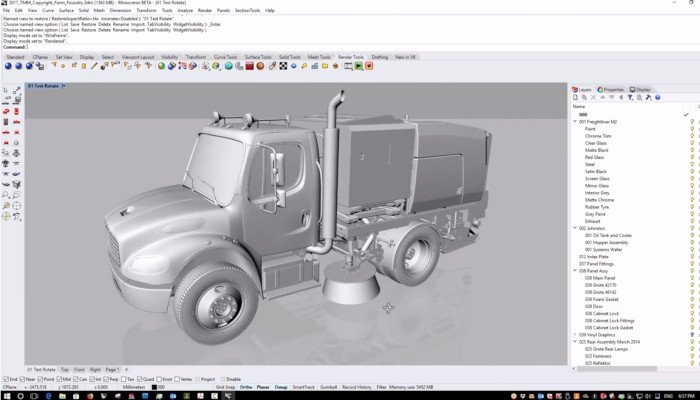
Rhino, though not as well known as some professional 3D software tools like SolidWorks, is a solid and versatile option. This professional CAD tool is now onto it’s sixth version, featuring a number of performance upgrades such as integrating the Grasshopper language, as well as presentation upgrades and more.
Rhino makes it easy to manipulate and edit parts to your liking, so you can either export them to send for review, or print them directly via STL file. Though the learning curve is moderately steep, the recent performance upgrades have simplified a number of areas – such as creating curvatures, the picture menu, and creating meshes – to make Rhino as productive as possible.
7 – SelfCAD
- 3D software price: Free for education, otherwise $14.99 per month.
- Company based: USA.
- Accessibility: browser.
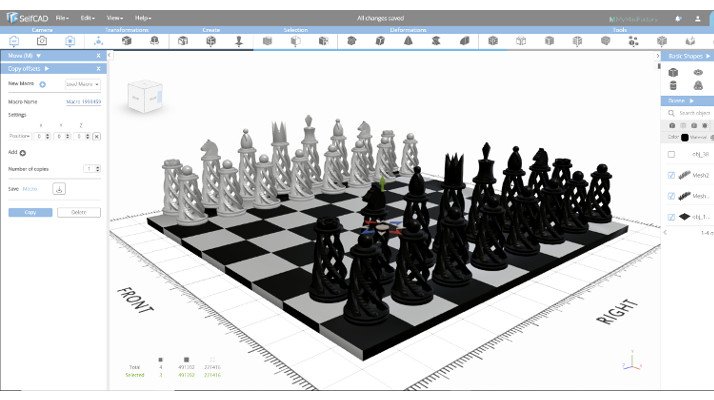
One of the few browser-based 3D software tools around, SelfCAD is a very interesting option out there for schools that don’t need to download anything to enjoy the benefits. Moreover, SelfCAD is free for educational use, though it is only $14.99/month to pay for it anyway – far less than many other tools on this list.
You can’t however expect SolidWorks or CATIA-level detail for this price however. What SelfCAD excels at though is being accessible, fun, and easy to get started with; an invaluable asset in encouraging intrigue in children.
It’s also built with 3D printing in mind, allowing you to seamlessly slice your models within your browser, and prepare STL or GCODE files to be 3D printed on your 3D printer.
8 – Blender – FREE professional 3D software
- Price: Free.
- Company based: The Netherlands.
- Accessibility: Download.
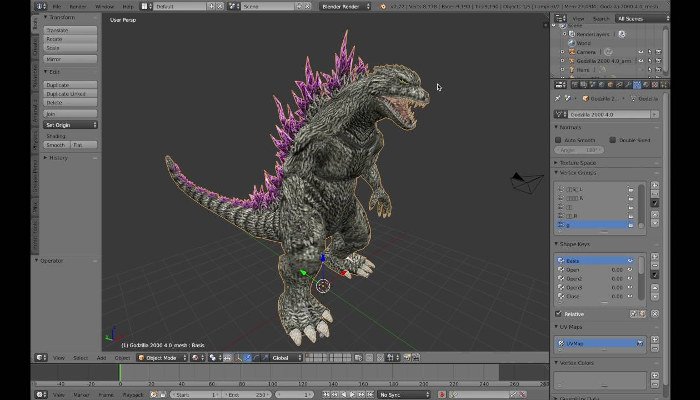
Blender is an incredible tool; perfect for a wide variety of uses – and despite being free, is still a fantastic professional 3D software tool.
Though it’s definitely good enough to warrant a fee, Blender stays true to its open-source roots, allowing users to create and modify anything they’d like to, exercising unlimited creativity. STL files can be created with ease, and if you’re struggling with the learning curve, there are an abundance of informative YouTube tutorials that will definitely help.
As fans of the open-source movement, 3DSourced highly recommends Blender. It not only has uses in 3D design for 3D printing, but also in film VFX, video game design, and more. Overall, it’s a fantastic, free, and versatile professional 3D software option.
9 – Cinema 4D
- Price: ~$3,500.
- Company based: Germany.
- Accessibility: Download.
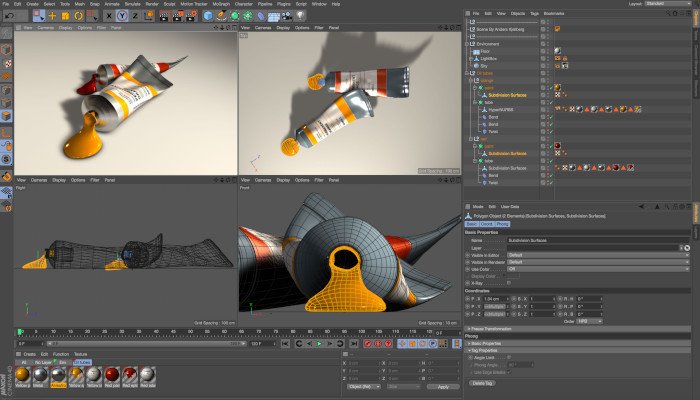
Another extremely powerful and expensive 3D software tool, Cinema 4D though expensive deserves its place on our professional 3D software list.
Highly praised for a number of its 3D tools – such as advanced polygon modeling, parametric modeling, and sculpting tools – Cinema 4D is perfect in the 3D modeling of car parts, landscaping and roads, and even film animation and characters. A number of professional studios solely use Cinema 4D and it is the professional 3D software of choice for many institutions, depicting how strong and versatile Cinema 4D is.
10 – Meshmixer
- Price: Free.
- Company based: USA.
- Accessibility: Download.
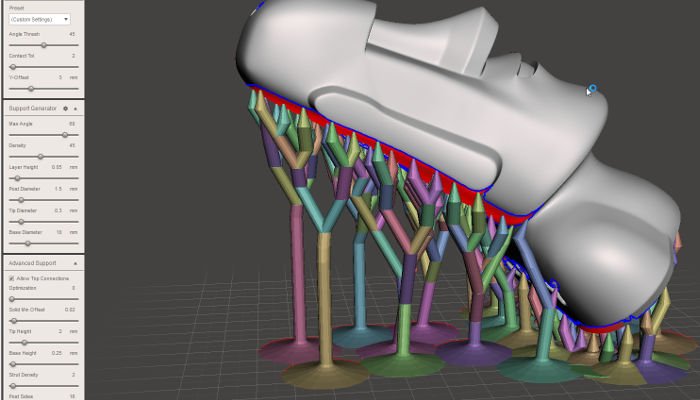
Meshmixer is unlike any other professional 3D software on this list, so it is unfair to compare it to its peers. This is because Meshmixer’s prime function is to edit existing files within it, such as by animating the model, hollowing out or filling it, or just generally repairing a model with faults.
Meshmixer is therefore a fantastic, free tool, and the third 3D software tool on this list created by Autodesk. Moreover, its topological optimization tool makes it a hugely useful way to save costs by making parts lighter by removing necessary extras. In industries where the savings through saving weight are huge, like aerospace, this is invaluable.
Moreover, the fact that it was designed with 3D printing so close to mind is a major advantage. For example, supports can be easily added in before exporting the STL file, with the repair tool also simple to correct files before printing.
Other professional software options ranked:



